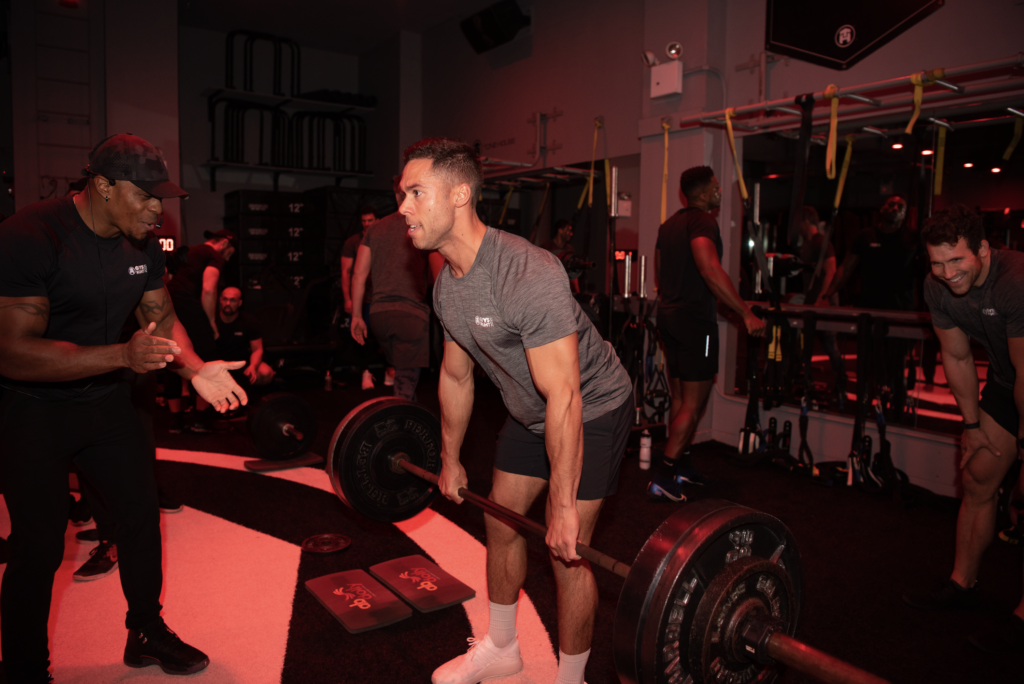By: Kay Rivera
In late summer of 2020, NYC gyms opened our doors again after months of being closed due to the pandemic. Tone House reopened with something big: Strength.
Strength is Tone House’s final addition towards the 360-approach to athletic training. If you missed our Instagram Live discussing the methodology behind our Strength programming with Founder Alonzo Wilson, read on for the recap!
Strength v. Conditioning
Strength and Conditioning are separate entities with it’s given focus. Athletes won’t find sprints in Strength, or bench presses in Conditioning. However, each class format complements one another to create effective athletic training. As the founder of Tone House and Director of Training, Alonzo Wilson states, “At Tone House we focus on sports performance, so we’re trying to get you stronger. In team sports, Conditioning and lifting are always separate.”
This is due to the interference effect. Studies have shown that when you combine two training modalities, such as Strength & Conditioning simultaneously, results are limited as compared to training that is done in individual sessions.
Hence, separating each modality to their own training session will maximize an athlete’s overall results. Head Coach Joe Rodonis provides an example, “You may normally bench 225 lbs when you are fresh. But if I made you run a mile, then do 100 push ups, followed by benching 225 lbs, it will be a lot harder and you may struggle.”
This is why athletes will find time in Strength classes where they can rest. As Wilson puts it, “You need to rest your body before you go into your next set because I need you to give me everything on [the lift].”

Foundational Lift with the help of Accessory Work
In Strength classes, athletes will complete lifts commonly found in their favorite teams training facilities. These are foundational lifts utilizing barbells and are complimented with accessory work.
The foundational lifts we use in the House are: bench press, squat, and deadlift.
Accessory work is in place to strengthen athletes for the foundational lifts.
Wilson further explains why Tone House works both foundational lifts and accessory work in Strength sessions, “People think the bench press is just chest. It also involves your lats, shoulders, triceps, and stabilizing your core and feet. Accessory work helps train the lift in itself.” With this example, you might find accessory work such as tricep extensions or dumbbell shoulder press to isolate the muscles worked in the bench press.
Consistency is Key
Athletes who are looking to add weight to their foundational lifts will accomplish it through consistency. This is baked into the structure of Tone House’s monthly cycle.
Wilson explains our programming structure, “We follow a monthly cycle that starts with endurance and volume at the beginning of the month. You can expect higher rep counts on the platform during this first week as we drill the foundations of the lifts. You’ll work at around 50-80% of your max during this week.
As the month progresses, we reduce volume and introduce lower, heavier rep counts. During weeks two and three, you’ll see rep counts in the 6-10 range, as we focus on building strength and power in your lifts.
By week four, we’re ready to test thes strength you’ve culminated over the month, and end with 1-2 heavy reps at 90-100% of your max.”
This monthly structure has the progressive overload principle built in, which as Wilson puts, “is gradually increasing the weight, frequency, or volume over time in your strength training routine to stimulate muscle growth and strength gain.”
This programming style is consistent with team sports style lifting. Consistency and repetition are key components of muscle growth and improvement on lifts.
As Rodonis describes, “Keeping things simple, yet effective and results-oriented, is part of our secret sauce.”
Athletes who remain consistent with the training cycle each month should find themselves adding 5-10lbs at the start of each cycle.
New Athletes Welcome!
With our space created to resemble sports training, our Rookie athletes are welcomed with open arms and team support behind them. Athletes are placed in small groups, meaning they will always have a spotter to try and test their strength safely and teammates cheering them on.
Wilson excitedly welcomes new athletes to the House, “this is the perfect place to come if you have never done [barbell training] before because you are in an environment where you are able to start from square one, which is just the bar. At Tone House, you do not have to worry about [intimidation] because you are getting support and can put what you want on the bar. Gradually, you will get to a point where you are a lot [stronger] than when you first came in.”
New athletes can purchase their Rookie Pass to get their first 2 classes for the price of 1. Perfect to try a Strength and Conditioning session.
